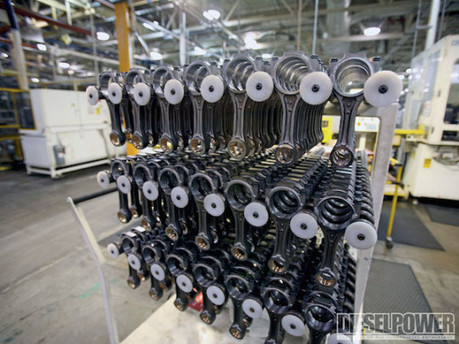Apr 1 2014
Steve Jobs on Juran | Curious Cat | John Hunter
See on Scoop.it – lean manufacturing
“This webcast shows an interesting interview with Steve Jobs when he was with NeXT computer. He discusses quality, business and the experience of working with Dr. Juran at NeXT computer. The video is likely from around 1991.”
The interview starts slowly, with Jobs collecting his thoughts before speaking, and it was not supposed to be about Juran. Jobs is the one who brings up Juran in response to a question about quality.
At first, he reverently calls him “Dr. Juran” — Juran was not a PhD — and then, affectionately, “Joe Juran.” Steve Jobs as the respectful disciple is something I had not seen before. What was he so impressed with? Here are a few I picked up in the video:
- While focused on quality, Juran did not see it as more than it was. It is about making good products and services; it is not a philosophy of life.
- For all his accomplishments, Juran remained simple. He treated everybody alike, and answered every question put to him as if it were the most important in the world.
- Juran was “driven by his heart” to share what he had learned and found out in decades of work.
Towards the end of the video, the 30-year old Jobs sounds more and more as if he setting a role model for himself. But Juran lived to be 103; Jobs died at 56, only three years after Juran, and did not get the chance.
See on management.curiouscatblog.net




Apr 4 2014
The Day I Thought I’d Get Fired from “The Old GM” – Putting Quality over Quantity | Mark Graban
See on Scoop.it – lean manufacturing
 Blog post at Lean Blog :”[…]I’ve been in healthcare for 8.5 years now, but at the start of my career, I was an entry-level industrial engineer at the GM Powertrain Livonia Engine plant from June 1995 to May 1997. This plant was in my hometown, Livonia, Michigan and was located exactly 1.3 miles from the house where I grew up. The factory opened in 1971, two years before I was born. The factory closed in 2010 due to the GM bankruptcy and sits empty today as part of the ‘rust belt’ ..]”
Blog post at Lean Blog :”[…]I’ve been in healthcare for 8.5 years now, but at the start of my career, I was an entry-level industrial engineer at the GM Powertrain Livonia Engine plant from June 1995 to May 1997. This plant was in my hometown, Livonia, Michigan and was located exactly 1.3 miles from the house where I grew up. The factory opened in 1971, two years before I was born. The factory closed in 2010 due to the GM bankruptcy and sits empty today as part of the ‘rust belt’ ..]”
About a decade before Mark, I spent time implementing scheduling systems in GM plants, and my memories, while not great, are less gloomy than Mark’s. My main project was at the GM aluminum foundry in Bedford, IN which is still open today, unlike the Livonia plant where Mark worked.
I remember being impressed by the depth of automotive and manufacturing knowledge of the GM engineers and managers; I also remember them as unable to implement any of their ideas, because it was dangerous to be perceived as someone who makes waves. They had no need for the scheduling system, but it was a corporate decision to deploy it in 150 plants, and they just had to get along.
The company culture was dysfunctional — particularly in quality, safety, and improvement — but the plant was in a small town where the employees all knew each other and worked to make a go of it as best they could. And, they are still around.
I have since experienced a radically different quality culture in another car company. The quality manager in a parts plant once noticed that defectives had been shipped to final assembly. The parts had been machined so well that they didn’t leak at final test even though they were missing a gasket.
The quality manager — who told me the story — felt that he had to do whatever it took to prevent the cars being shipped with the defective parts. What it did take was driving two hours to the assembly plant at night, locating the finished cars with the defective parts in the shipping yard, and removing their keys.
See on www.leanblog.org
Share this:
Like this:
By Michel Baudin • Blog clippings • 1 • Tags: car manufacturing, GM, Quality, Safety